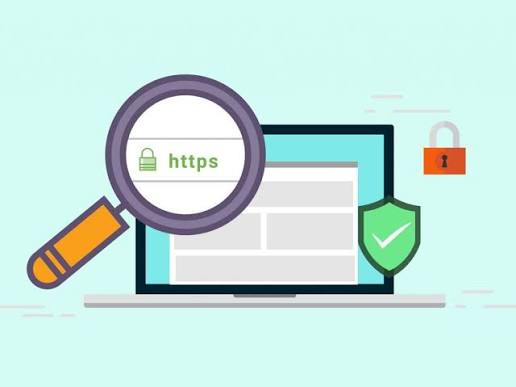
Safe URL Checker
Created on 17 September, 2025 • Checker tools • 92 views • 4 minutes read
A Complete Guide to Verifying Website Safety
Safe URL Checker: Ensuring Website Security Before You Click
What Is a Safe URL Checker?
A Safe URL Checker is an online tool that analyzes a website’s link to determine whether it’s safe to visit. In today’s internet, malicious links can lead to phishing attacks, malware, or data theft. Using a Safe URL Checker helps protect users, businesses, and website owners from unsafe websites.
The tool examines a URL and provides instant feedback about its safety, security certificates, and potential threats. It’s an essential first step for anyone managing web traffic, sharing links, or simply browsing the internet safely.
Why Safe URL Checker Is Important
Safe URL Checkers protect both casual users and professional teams from online threats. Here’s why they matter:
1. Prevent Malware and Viruses
Unsafe websites can host malware or ransomware that infects devices. Safe URL Checkers warn you before visiting harmful links.
2. Avoid Phishing Attacks
Phishing sites attempt to steal login credentials, bank details, or personal data. Checking a URL helps you avoid falling victim.
3. Business Protection
Companies sharing links with customers can verify their URLs to prevent distributing malicious content accidentally.
4. SEO and Reputation
Websites that unknowingly link to unsafe URLs may face SEO penalties and lose user trust. A Safe URL Checker ensures all shared links are verified and secure.
5. Compliance and Security Audits
Organizations performing regular security audits use URL checkers to validate links in emails, websites, or digital campaigns.
What Information Does a Safe URL Checker Provide?
When you check a URL, the tool usually provides:
- Website Reputation: Whether the URL is considered safe or unsafe.
- Malware Detection: Identification of malicious software hosted on the site.
- Phishing Warnings: Flags sites trying to steal user information.
- SSL/TLS Status: Checks if the URL uses secure HTTPS connections.
- Blacklist Status: Confirms if the URL appears in known security blacklists.
- Domain Information: Provides basic details about the domain owner and registration.
This information allows users to make informed decisions before clicking a link.
How Does a Safe URL Checker Work?
Safe URL Checkers use multiple databases and algorithms to determine a website’s safety:
- Threat Databases: The URL is compared against known blacklists and malware repositories.
- SSL Verification: The tool verifies if the site has a valid HTTPS certificate.
- Website Reputation Scoring: Historical data about the domain’s usage and reports from security communities are analyzed.
- Content Analysis: Some advanced checkers inspect the page for suspicious scripts, pop-ups, or redirects.
Once the analysis is complete, the user receives a safety score or a clear safe/unsafe status.
Practical Use Cases for Safe URL Checkers
1. Everyday Browsing
Users can check unknown links received via email, social media, or messaging apps before clicking.
2. Digital Marketing
Marketers verify the safety of links in campaigns to protect their brand reputation and avoid linking to compromised sites.
3. Corporate Security
IT teams scan internal and external links to prevent employees from accessing malicious websites.
4. Educational Use
Schools and institutions can ensure that online resources and learning materials are safe for students.
5. Portfolio and Profile Sites
Website owners, including those using ProfileLinks.xyz, can verify that all external links are secure, maintaining user trust.
Limitations of Safe URL Checkers
While highly useful, these tools have some limitations:
- New Threats: Some malicious URLs may not yet be listed in threat databases.
- Partial Analysis: Free tools might not scan full content or scripts.
- False Positives: Occasionally, safe websites may be flagged incorrectly.
- No Replacement for Antivirus: URL checkers are supplementary tools and should be combined with proper security software.
Despite these limitations, they remain a fast and effective first line of defense.
How to Use a Safe URL Checker
1. Online Tools
Websites like VirusTotal, Google Safe Browsing, or URLVoid allow you to paste a link and check its safety instantly.
2. Browser Extensions
Many browsers offer security extensions that automatically check URLs before you visit them.
3. Security Software
Antivirus and endpoint protection software often includes integrated URL scanning features.
4. API Integration
Businesses can integrate URL checking APIs into their platforms to automatically validate links in emails or websites.
The Future of Safe URL Checking
As cyber threats evolve, Safe URL Checkers are becoming smarter:
- AI-Powered Detection: Machine learning models detect malicious patterns even in newly created URLs.
- Real-Time Monitoring: Continuous scanning of links across websites, emails, and social media.
- Enhanced Browser Integration: Direct alerts when visiting unsafe sites without manual checks.
The goal is to make the internet safer and protect users from increasingly sophisticated attacks.
Conclusion
A Safe URL Checker is an essential tool for maintaining online security, whether you’re a casual internet user, digital marketer, or website owner. It helps prevent malware infections, phishing attacks, and reputational damage by ensuring links are verified before they are visited.
For portfolio or profile sites like ProfileLinks.xyz, using Safe URL Checkers regularly ensures that all external links remain safe, trustworthy, and reliable.
By incorporating Safe URL checks into daily internet usage, you can browse confidently and protect yourself and your audience from online threats.
Popular posts
-
Random number generatorGenerator tools • 133 views
-
Emojis removerText tools • 129 views
-
Lorem Ipsum generatorGenerator tools • 129 views
-
Reverse lettersText tools • 121 views
-
Old English text generatorText tools • 121 views